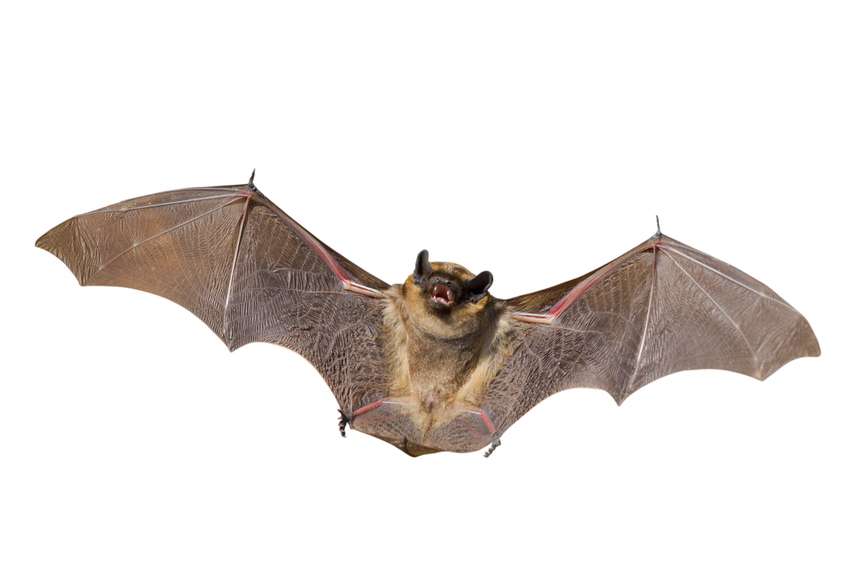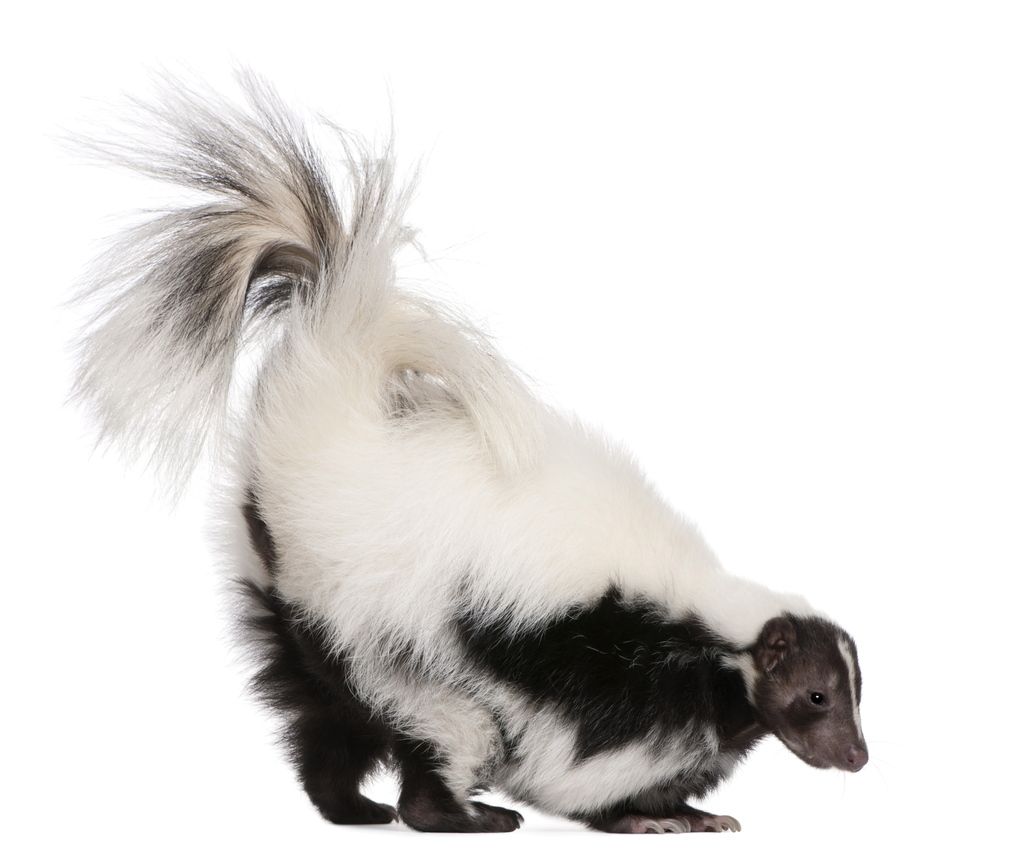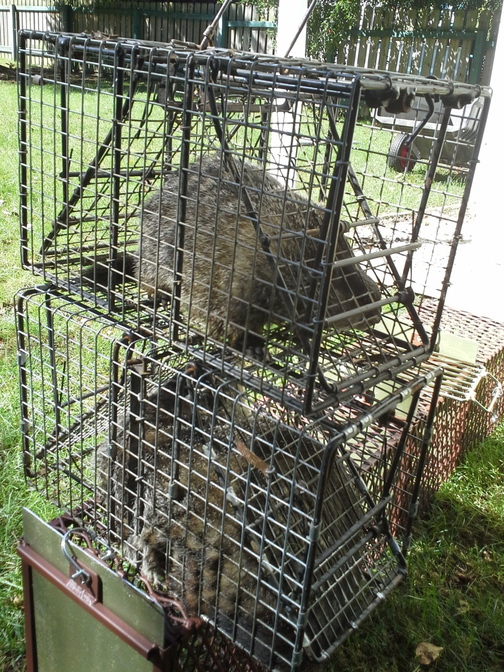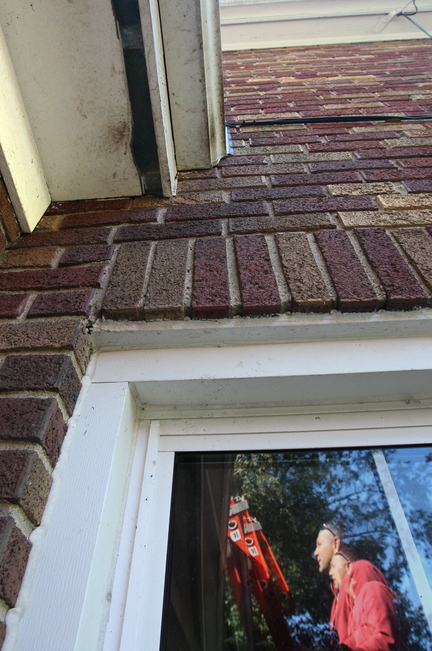AKRON, Ohio – Brian Briggs can’t resist looking for trouble.
Driving down a residential street, he’ll slow to peer at rotted siding or point to some suspicious dark streaks under an attic vent. Even from a distance, he can tell that some form of wildlife has made its way into those houses.
Briggs is a nuisance animal remover, the guy homeowners and landlords call when wild animals make their way into walls, attics, basements and other places where they’re not welcome.
He and his two partners in Frontline Animal Removal specialize in trapping and removing animals from buildings and making sure others don’t come in. Fall is a busy time of year for the crew, as varmints move in on humans in an effort to escape autumn’s chill.
Usually Briggs handles the paperwork and administrative chores for the Lake Township, Ohio-based business, but this day he’s making the rounds to check traps the crew has set and assess new customers’ situations. All the while, he’s fielding calls from homeowners with squirrels in their attics or groundhogs under their sheds.
It takes him just seconds to recognize the problem at a house in West Akron, Ohio, where the owner has heard noises above the ceiling.
“Brick. Squirrels can shimmy right up,” Briggs says. He looks up to see a narrow opening along a soffit where a section of mesh vent had rotted away. Bingo.
The problem, Briggs explains, is that animals are relentless when they’re seeking a place to stay warm in fall or to give birth in spring. They’ll chew through wood. They’ll push aluminum soffits out of the way. They’ll squeeze through small openings – in some cases, just a fraction of an inch wide.
Sometimes sloppy construction is to blame, sometimes poor maintenance. Other times it’s just a matter of a wily animal exploiting an opportunity.
In urban areas particularly, many animals are born in attics. So that’s where they go to breed, Briggs says.
TROUBLE SPOTS
Briggs scales a ladder onto the lower roof of a split-level house in Lake Township and immediately starts noticing potential trouble spots.
He points to a gap where the siding doesn’t quite meet the edge of the chimney. “That’s prime space for bats,” he says.
A little give in the aluminum soffit could be a problem, too. Unless it’s reinforced with plywood, a raccoon can easily push it up to get access to the house.
And then there’s the tree overhanging the roof, the perfect jumping-off point for a squirrel.
Vents without louvers or screens are often problems, he said. So are the places where pipes and wires enter a house. The complex roof angles from multiple dormers and gables that are common in home construction today can also spell trouble, because they can cause water to pool and promote moisture damage.
The problems aren’t uncommon, and they’re not limited to older houses, he says. But without a practiced eye like Briggs’, most homeowners probably wouldn’t even see them.
“Most people don’t notice it until they hear the noise in the attic,” he says.
TRAPPING ANIMALS
Briggs is striding across a backyard in Lake Township toward a shed plagued by groundhogs when he hears a distinctive clang.
Success. The spring-loaded door has slammed on one of the two box traps his company set the day before.
Sure enough, he finds a toothy culprit trapped in one metal cage. Then he rounds a corner of the shed to find a surprise: a second groundhog in the other trap.
Double success.
The animals appear unharmed, but one chatters its teeth in what Briggs explains is a defense mechanism. He has no way to move them, so he leaves the animals in the traps until he can return in a couple of hours with a transport cage.
The Frontline crew almost always uses live traps to capture nuisance animals and then either releases them some distance away or euthanizes them. By state law, certain animals including raccoons, skunks and opossums must be destroyed because of their potential for spreading diseases. Others can be released, but only outside city or village limits and only on property where the owner has granted permission.
Briggs says homeowners occasionally will want the animals captured in their homes to be released on their own property, but he thinks that’s a mistake. Once an animal has gotten into a home, it will do almost anything to get back in, he says. If you’re not going to remove the animal from the property, you might as well not even bother catching it.
GETTING RID OF BATS
The bats are apparently gone, but their evidence remains on a near two-story home in Plain Township.
Bits of dried bat guano cling to the siding and chimney bricks. More droppings discolor the vents in the soffit where the bats have been living. Often bats will also leave dark streaks where they enter and exit a house, caused by the oil on their bodies.
Briggs’ colleague Ryan Kirk – one of three partners in the business, along with Dominic Morber – is just about ready to remove the bat cone he installed to rid the soffit of the winged intruders. The tube, which was inserted vertically into a portion of the soffit and has an open bottom, serves as a one-way exit. The bats can escape through it, but they can’t get back in. That’s because bats can only re-enter an opening by landing and crawling in, and the tube makes that impossible.
Bats can be expensive to eradicate. The law prohibits destroying bats, so “we can only kick ‘em out,” Kirk says. But the bats will do whatever they can to get back into a place they’ve inhabited, and they can squeeze into an opening just three-eighths inch wide. Keeping them out requires extensive sealing to close up all the little openings they might take advantage of.
Making repairs to prevent further wildlife infestations is part of Frontline’s approach, Briggs explains. He has construction experience, but the company will call in a professional builder if the repairs are extensive enough to warrant it.
“We try real hard to make it look like we were never there,” Kirk says.
HIDE AND SEEK
Briggs walks the roof of an apartment house in Barberton, Ohio, checking trap after trap. Every one of the 15 is empty.
The building has been plagued by squirrels, but so far he and his colleagues have trapped only two.
“This place is giving us fits,” he says.
Some nearby trees were recently trimmed, so Briggs figures that cut off the squirrels’ path to the building. Still, he expected to find something. He and his crew have closed off all the access points save one, and that one leads to a trap. They even used traps that had been wrapped with duct tape to capture some of the urine and fur of squirrels that were caught in them earlier, in the hope the scent would attract others.
Probably, he says, he’s going to have to go into the attic to look for spots of daylight that would indicate openings they’ve missed.
Send questions/comments to the editors.








Success. Please wait for the page to reload. If the page does not reload within 5 seconds, please refresh the page.
Enter your email and password to access comments.
Hi, to comment on stories you must . This profile is in addition to your subscription and website login.
Already have a commenting profile? .
Invalid username/password.
Please check your email to confirm and complete your registration.
Only subscribers are eligible to post comments. Please subscribe or login first for digital access. Here’s why.
Use the form below to reset your password. When you've submitted your account email, we will send an email with a reset code.